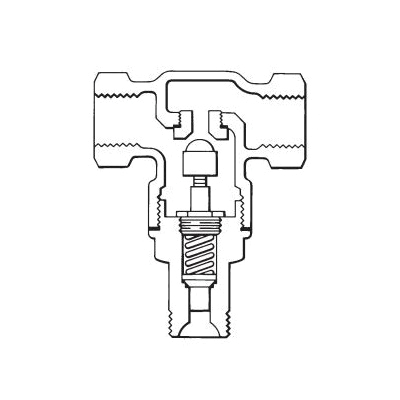
Spirax Sarco 0368590, BX6 Direct Acting Temperature Control Regulator Valve, 1/2 in, FNPT End Style, 17.2 bar
CBPN: 22202
MPN:0368590
DESCRIPTION
Spirax Sarco Temperature Control Regulator Valve, Direct Acting, 1/2 in Nominal, NPT, 17.2 bar, Bronze Body, 3.7 in L
The BX range of two port valves are used in conjunction with Spirax Sarco SA control systems to provide a self-acting temperature control unit. Alternatively, they can be used as electrically actuated temperature control valves by fitting an EL3500 Series electric actuator with a suitable temperature transmitter and controller.
Spirax Sarco 0368590, BX6 Direct Acting Temperature Control Regulator Valve, 1/2 in, FNPT End Style, 17.2 bar
CBPN: 22202
MPN:0368590
DESCRIPTION
Spirax Sarco Temperature Control Regulator Valve, Direct Acting, 1/2 in Nominal, NPT, 17.2 bar, Bronze Body, 3.7 in L
The BX range of two port valves are used in conjunction with Spirax Sarco SA control systems to provide a self-acting temperature control unit. Alternatively, they can be used as electrically actuated temperature control valves by fitting an EL3500 Series electric actuator with a suitable temperature transmitter and controller.
Specifications
Item Features
- Maximum allowable temperature: 500 deg F at 0 to 152 psig
- 1.92 Cv
- 8 deg p-band
- Differential pressure: 250 psi
- 2-port
- Maximum allowable pressure: 362 psig at 248 deg F
- 3.2 mm stroke
- BX6 orifice
- Horizontal installation
- Normally open single seat with 4 different orifice sizes: BX2, BX3, BX4 and BX6
- On liquid applications, the permissible maximum differential pressure may be affected by high static pressure

